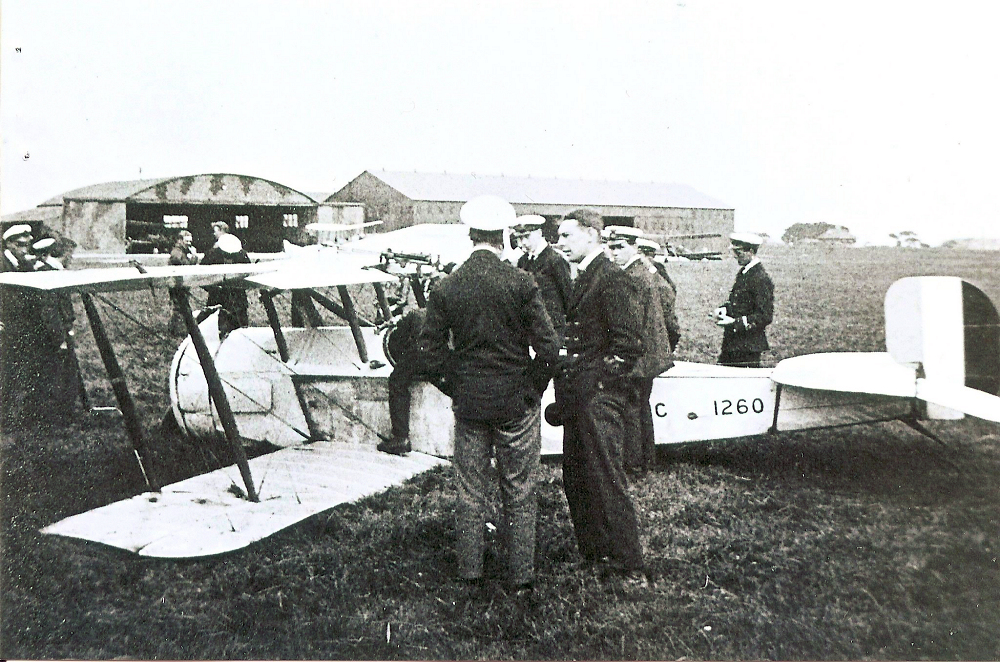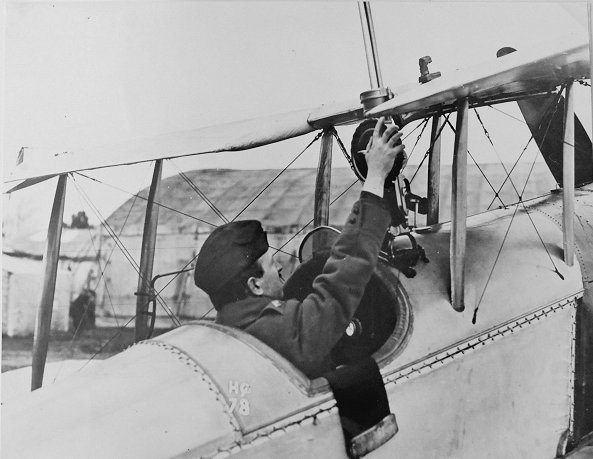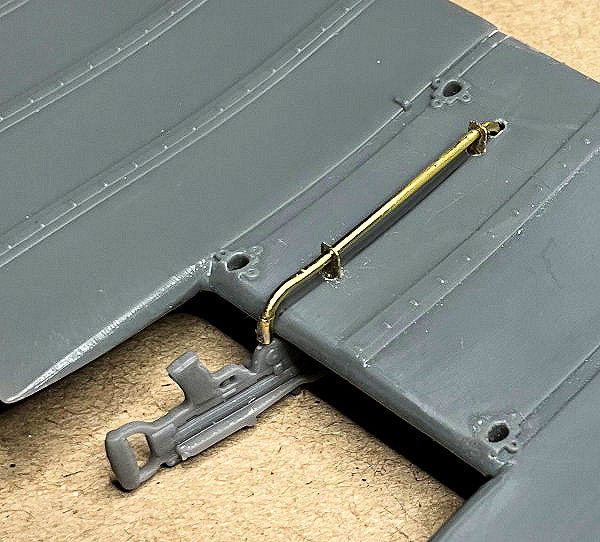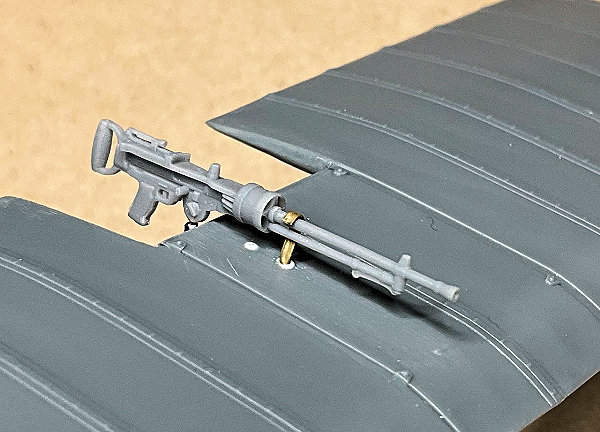Hi all,
During its service life the Scout had various weapons fitted and in different locations on the aircraft.
From rifles, Lewis machine guns and even duck guns fitted to the fuselage side, to machine guns fitted on the fuselage decking in front of the pilot or over wing mounted guns.
Different type of over wing gun mountings were used and either fixed or movable.
In the following photograph of 1260, it can be seen that it’s over wing gun mount was possible the Bristol Scout Lewis No.5 mounting Type1 - ’Christy pattern’ dated March 1916.
This mounting allowed the weapon to be fired over the rotating arc of the propeller or fired vertically upward.
It also allowed for the ammunition drum to be replaced, unlike the fixed mount version.
The mounting was basically a single metal tube attached to the underside of the upper wing centre section, which was cut back to the wing rear spar (to allow the weapon to pivot over the cockpit).
The gun and its mounting were off-set to the starboard side of the centre section.
At the cockpit end of the tube was a pivot mounting in the upturned top of the tube.
When fired over the rotating propeller the gun was locked in the horizontal position, but when fired vertically the hand grip of the machine gun was simply clipped into a fitting on the starboard side of the cockpit decking panel.
The horizontally positioned weapon was fired using a pull cable from the gun down into the cockpit.
When fired vertically it’s probable the pilot could operate the trigger by hand.



To represent this weapon fit I used a ‘Gaspatch’ 1:32nd scale Lewis Mk.1 half stripped heatsinks (13-32052).
Also 'Albion Alloy's' Brass tubing and rods.
The trailing edge of the upper wing required cutting back to the rear spar to allow the Lewis gun to be pivoted to to cockpit for reloading or firing vertically.


The fuselage clip fitting still needs to be made as well as a magneto starter switch (mounted on the post side of the fuselage near the cockpit,
Mike